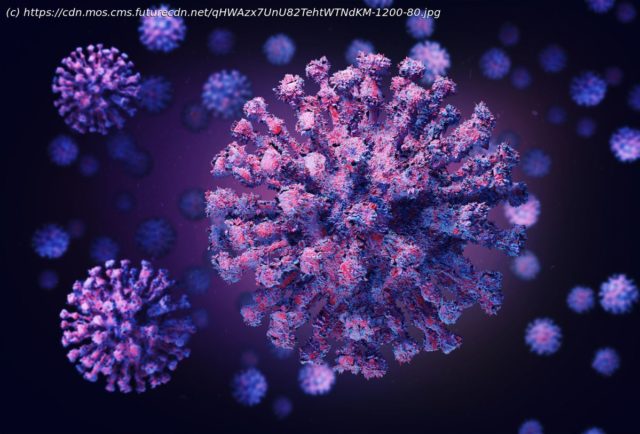Pandemic news from around the world.
Pandemic news from around the world: Live updates will continue in 2021! The first COVID-19 cases have been reported in Antarctica, meaning the disease has now spread to every continent in the world. On Tuesday (Dec.22), Chilean officials reported an outbreak of 36 COVID-19 cases at the Chilean research base General Bernardo O’Higgins Riquelme on the Antarctic Peninsula, according to the BBC. Of these,26 cases were military personnel and 10 were maintenance workers, the BBC reported. All of these cases have been evacuated from Antarctica to Punta Arenas, Chile, according to The Guardian. Antarctica had been COVID-19 free up until the current outbreak. The continent has no permanent residents, but about 1,000 people, including scientists and other workers, stayed there this past winter, The Guardian reported. President-elect Joe Biden received a dose of Pfizer’s new COVID-19 vaccine on Monday (Dec.21), according to The New York Times. He received the shot on camera at the Christiana Hospital in Newark, Delaware. “I’m doing this to demonstrate that people should be prepared when it’s available to take the vaccine. There’s nothing to worry about,” Biden said. Following concerns of a new version of the coronavirus that might be more transmissible, London and most of southeast England are now under an emergency lockdown, according to The New York Times. Prime Minister Boris Johnson announced the lockdown on Saturday (Dec.19) citing concerns that the mutated virus — which was detected a couple of weeks ago in southeast England — may be as much as 70% more transmissible than previous versions, according to the Times. The new version of the coronavirus is detected in more than 60% of new infections in London and have also been detected in several other countries, according to the Times. But it’s not yet clear if this coronavirus version is any more infectious than the last and thorough analyses will need to be conducted before conclusions are made, scientists cautioned. In South Africa, a similar version of the virus has been found in up to 90% of new cases detected since mid-November, according to The Times. It’s common for viruses to mutate, and this particular coronavirus has mutated many times since the start of the pandemic. But experts told The Times that it would take years for the virus to mutate enough such that it would make the current vaccines developed to fight COVID-19 ineffective. There have now been more than 17 million cases of COVID-19 in the U.S. and more than 300,000 deaths, according to The COVID Tracking Project. There are currently 114,237 people hospitalized across the country and 21,900 people in the ICU. California is facing a massive surge in cases; the state reported 41,012 new COVID-19 cases and 300 new deaths on Thursday (Dec.17), according to the state’s COVID-19 dashboard. By comparison, at the start of November, California was reporting a seven-day average of 4,183 cases, compared to an average of 38,774 on Thursday, according to CNN. “We’re experiencing an explosive and very deadly surge,” Dr. Barbara Ferrer, Los Angeles County Public Health Director said, according to CNN. Intensive care unit beds are rapidly filling up across the state; there are only 1,234 ICU beds left available in California, according to the dashboard. Current closures across California are impacting around 98% of the state’s population, according to CNN. The U.S. Food and Drug Administration is expected to authorize Moderna’s COVID-19 vaccine on Friday (Dec.18). Once authorized, it will be the second coronavirus vaccine to get the green light from the agency in just a week, with Pfizer’s vaccine gaining authorization on Dec.11. Moderna is expected to begin shipping 5.9 million doses of its vaccine on Sunday (Dec.20), with the first deliveries arriving Monday (Dec.21), according to The New York Times. Unlike the Pfizer vaccine, Moderna’s vaccine does not require storage in extremely cold temperatures, and states are hoping to distribute the vaccine to rural hospitals and community health centers, the Times reported. California, once praised for its early pandemic response, is now the new U.S. hotspot for COVID-19 infections. The state has reported an alarming surge in cases, breaking previous records for daily cases. On Thursday (Dec.17), the state reported some 50,000 COVID-19 infections in 24 hours, and nearly 100,000 in 48 hours, according to The Washington Post. That’s more than the daily cases reported in many countries, including India, Germany and Britain, the Post reported. The state also set a record for daily deaths on Thursday, with 379 fatalities reported, up from the previous high of 293. Capacity in intensive care units has also dropped dramatically, with hospitals in Southern California reporting zero percent capacity on Thursday. “I want to be very clear: Our hospitals are under siege, and our model shows no end in sight,” said Christina Ghaly, director of Los Angeles County’s Department of Health Services, the Post reported. On Thursday (Dec.17), a Food and Drug Administration (FDA) advisory committee will meet to determine whether to recommend that Moderna’s coronavirus vaccine for emergency approval, according to The New York Times. This panel, composed of independent experts, will vote on whether to recommend the vaccine after hearing from the company, FDA scientists and the public, according to The Times. Last week, the same panel of experts met to discuss Pfizer’s coronavirus vaccine and voted to recommend emergency authorization; the authorization came the next day. There have now been more than 16.9 million cases of COVID-19 in the U.S. and more than 307,000 deaths, according to the Johns Hopkins dashboard. There are currently 113,090 people hospitalized across the country with more than 21,900 of them in the ICU and 7,778 on a ventilator, according to The COVID Tracking Project. A wild mink in Utah may be the first “free-ranging, native wild animal” confirmed to be infected with SARS-CoV-2, according to the U.S. Department of Agriculture (USDA), Live Science reported. The mink was found near a mink farm and likely picked up the infection from the farmed mink. There’s no evidence that the virus spread to other minks or wild animals; but if the virus does begin circulating in wild animals, it could pick up mutations that COVID-19 vaccines may not protect well against if it spreads back to humans, according to the report.






